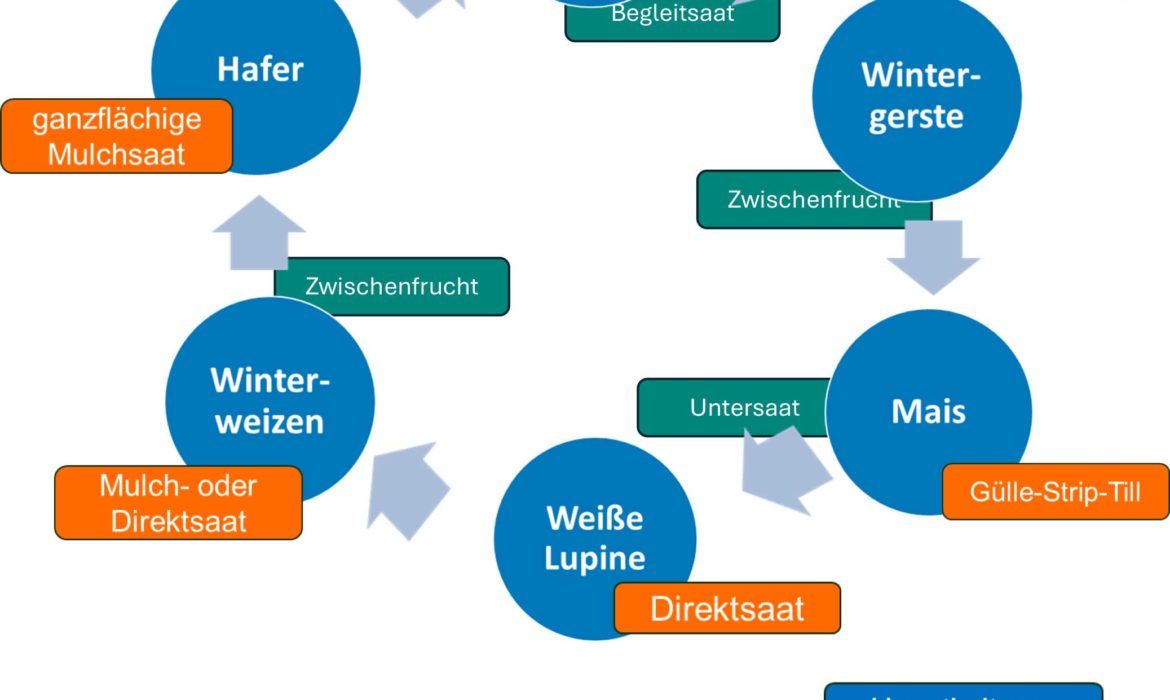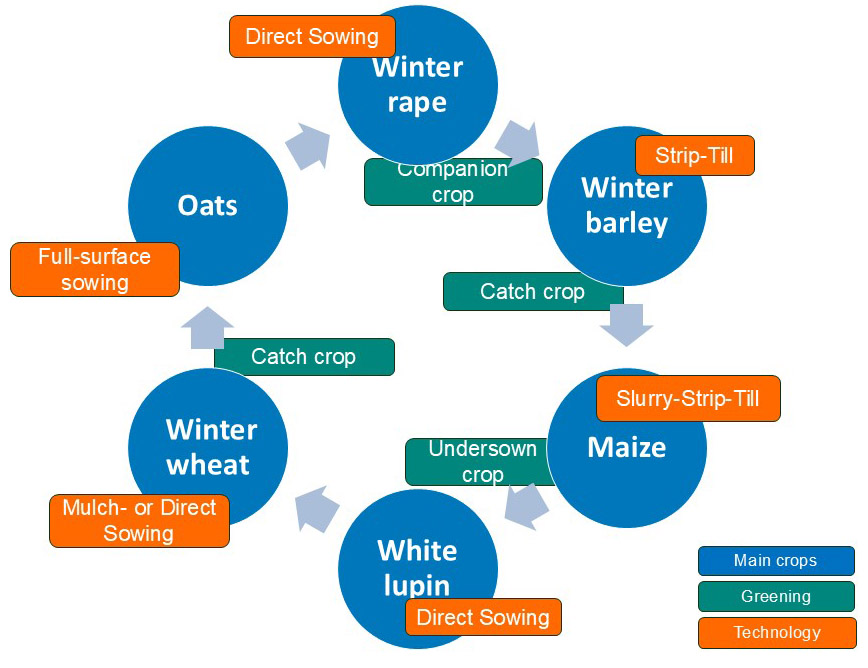CRF crop rotation – How could crop rotation be implemented in the CRF arable farming system?

The second arable farming dialogue took place during this year’s AMATECHNICA at AMAZONEN-Werke. The Controlled Row Farming (CRF) farming concept was the main topic of the event. Precision Farming trials and a comparison of direct vs. mulch sowing at Gut Wambergen were also presented.
The CRF farming concept is seen as an exciting approach for possible future challenges, such as the elimination of plant protection agents, an increase in biodiversity and more efficient fertiliser use. Crop rotation is a central component of the future development of CRF. Various steps were therefore defined. The “basic concept” serves as an introduction to the CRF farming concept, whereby implementation in individual main crops can be carried out with existing machine equipment for the most part. The initial integration of companion crops in rape cultivation can be mentioned as an example. The “biodiversity concept” means maximising plant diversity with the acceptance of reduced yields. Under the circumstances, implementation is only realistic with funding programmes.
The “target concept” means that the complete cultivation system is oriented towards CRF, so that the row widths are standardised, fertiliser is placed in the row and companion plants are sown in as many crops as possible. Furthermore, the machine equipment is tailored to the CRF system. The key premise of the “target concept” is that it provides yields at a high and stable level. The yields should be at the same level as those obtained in conventional agriculture.
Possible crop rotations were discussed in an analysis of the overall arable farming system, in order to take phytosanitary, agricultural and economic aspects into account. A possible crop rotation for the target concept is presented in the following.

The rotation starts with rape, which is grown with a companion crop, e.g. TERRALIFE BRASSICA Pro. This is followed by winter barley. The companion crop mixture has the advantage that the soil between the precision sowing is covered, and the diversion of harmful insects, such as the rape winter stem weevil, could be observed. The winter barley is sown into the rape stubble to maximise the positive effect of the preceding crop. In addition, the winter barley has a higher N absorption capacity in autumn than winter wheat. Maize is grown the following spring after a structured catch crop. The structured catch crop enables legumes to be grown in the row of maize, and a higher N concentration can be found in the soil in this row. This means that the maize has to be supplied with fewer nutrients in spring. Soil conditions permitting, the maize can be grown in the slurry-strip-till process to increase the N efficiency. An undersown crop is sown in the maize to provide sufficient vegetation over the winter after the maize harvest. This enables white lupin to be directly seeded the following spring. Winter wheat is grown in the autumn via mulch or direct sowing after the white lupin has been harvested. The wheat can make excellent use of the preceding crop effect, such as the good root penetration and the nutrient supply of the white lupin. Oats are the last element in the crop rotation. They are grown as a recovery crop and are the only crop in the rotation which is sown across the full working width. The reason for full-surface sowing is that this enables e.g. any ground undulations to be compensated for, and weeds and grass weeds can also be systematically suppressed.
Apart from oats, the last element of the crop rotation, all crops are grown in the CRF system with a row width of 50cm. Cereal cultivation, which takes place in a double row, is the exception. Furthermore, the question arises as to whether all measures should be implemented in the row or whether crop protection measures such as grass weed control should be implemented with full area coverage, in order to prevent resistance. We had positive experience e.g. with row-specific N fertilisation in wheat, since higher N absorption could be measured. Further results will be presented later. Another aspect which needs to be examined is the intensive cultivation of legumes, both as a main crop and a component of undersown and companion crops, as well as catch crops.
If additional crop rotation elements such as sugar beet or potatoes are considered, the crop rotation will obviously have to be redesigned, and the question as to whether and how these crops can be integrated in a CRF crop rotation also arises.
The fundamental objective of the CRF cultivation system must be that it is financially self-sustaining through high yields and lower costs for inputs, thereby making arable farming more resilient to the effects of the weather as a result of a healthy and vital soil life. The “target concept” will therefore continue to be pursued in the future.

